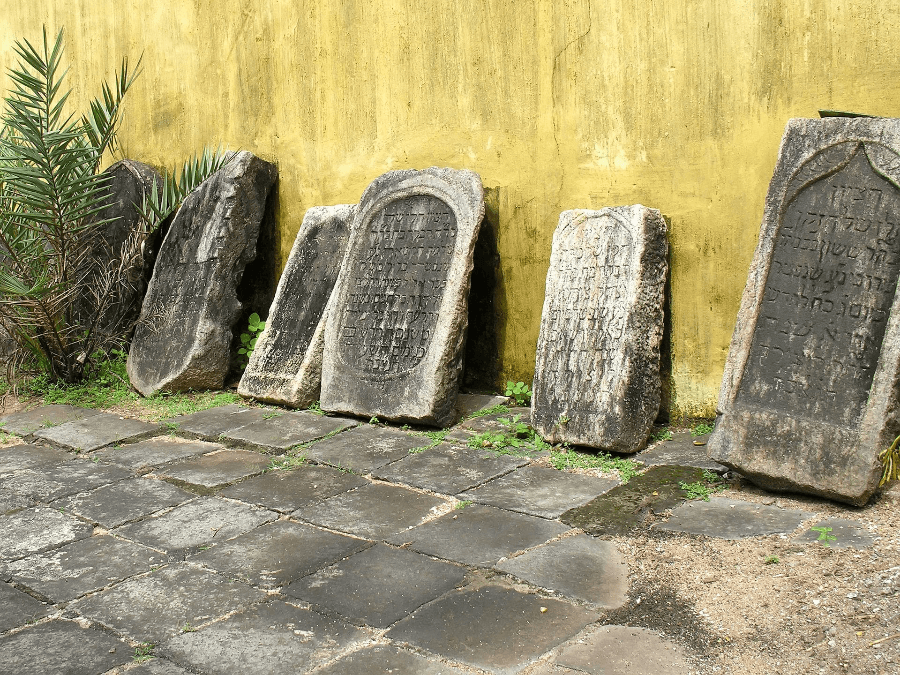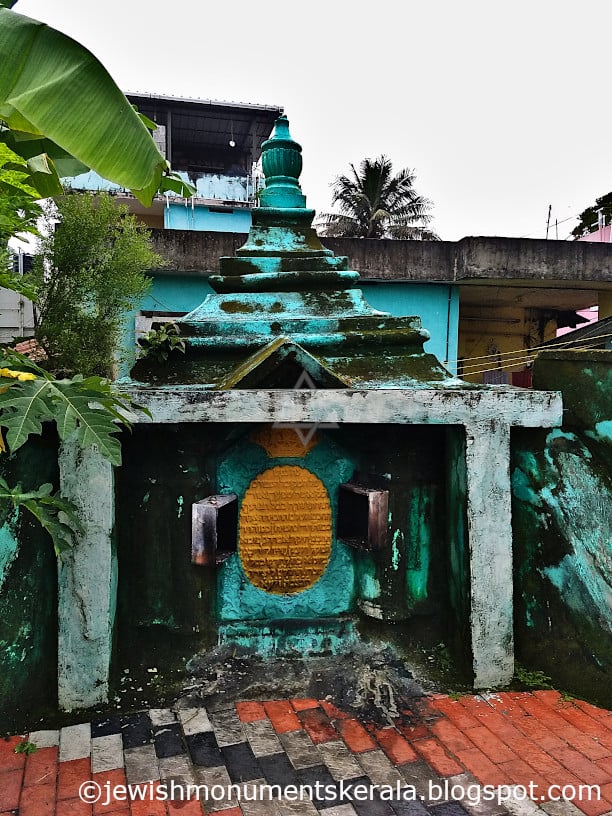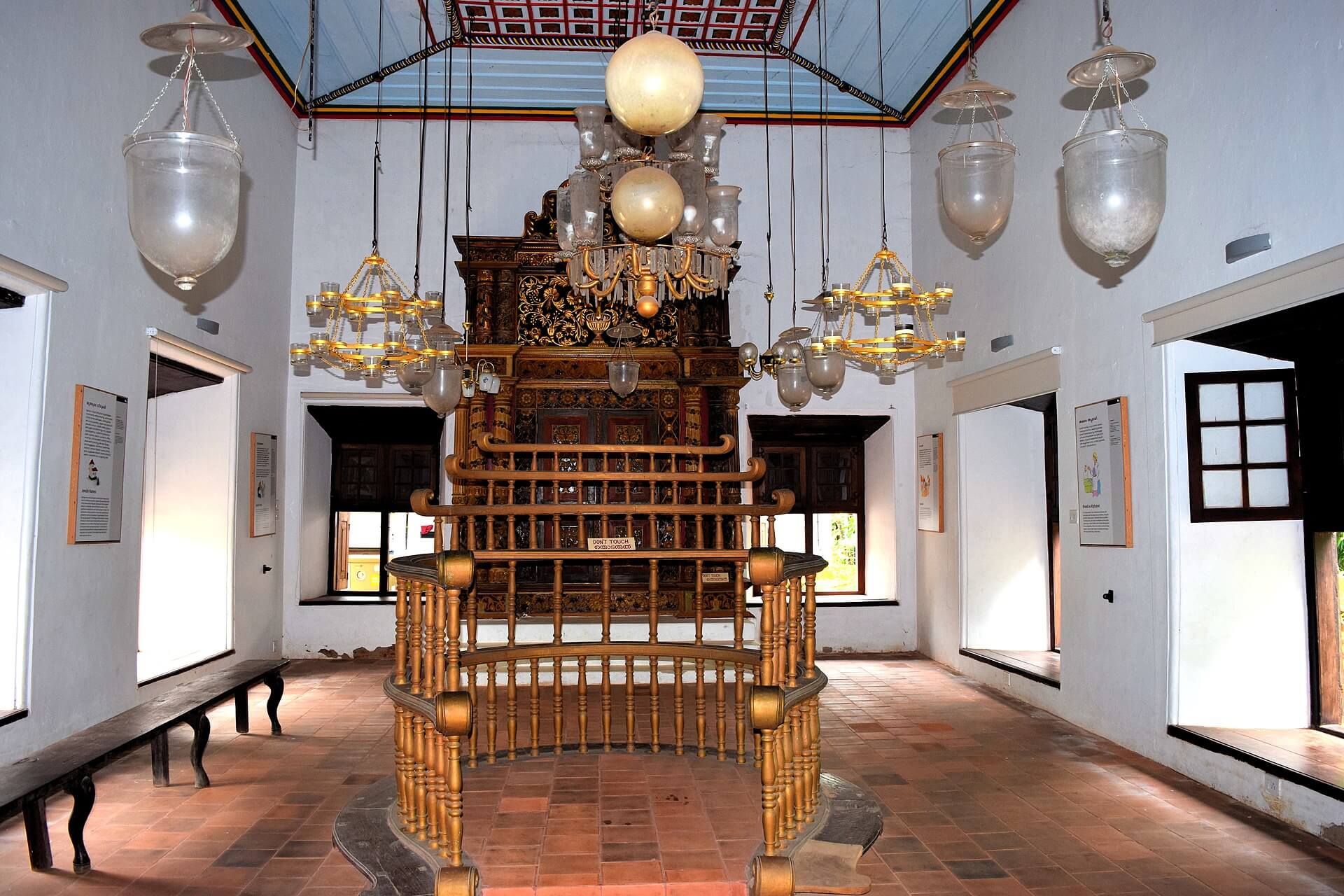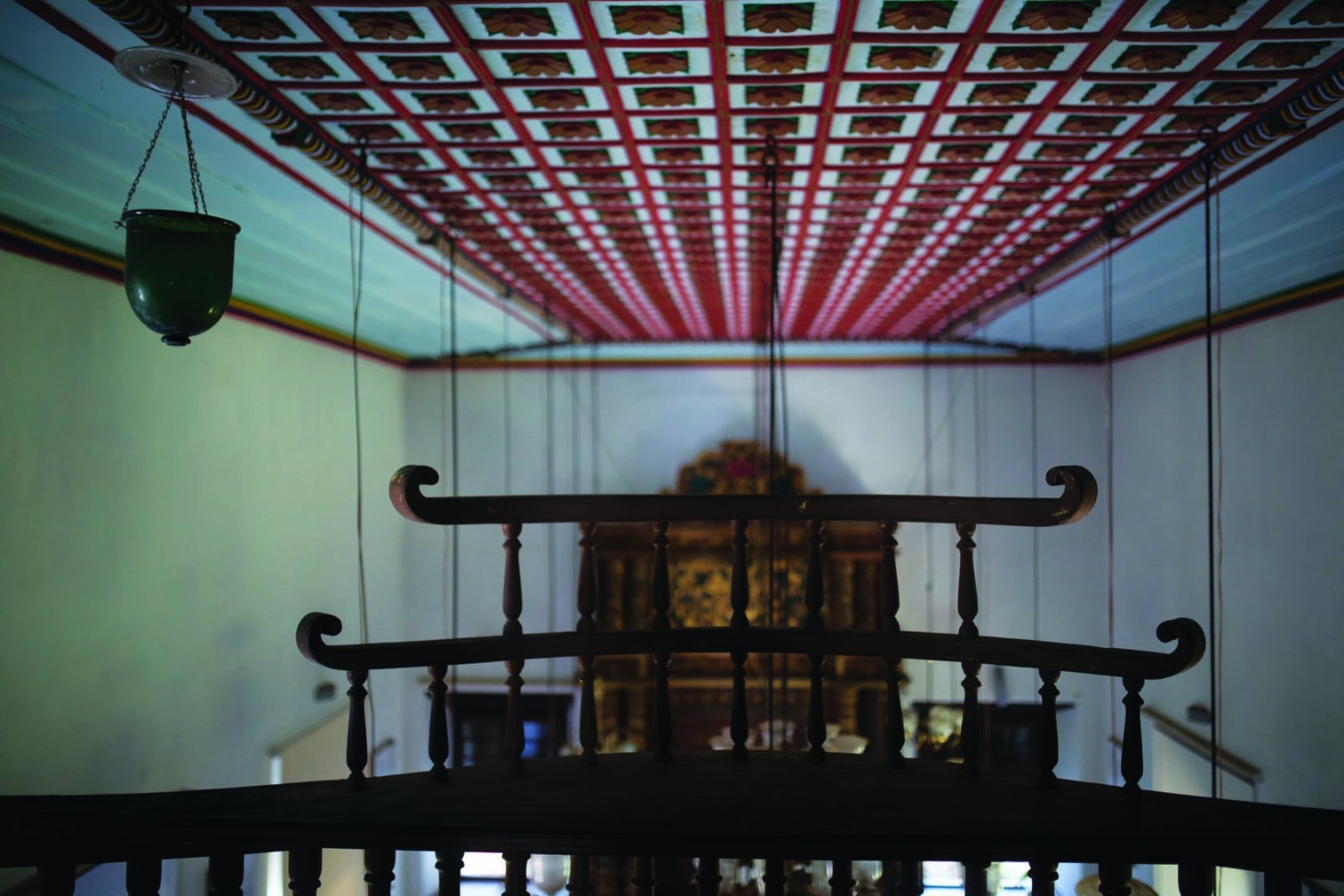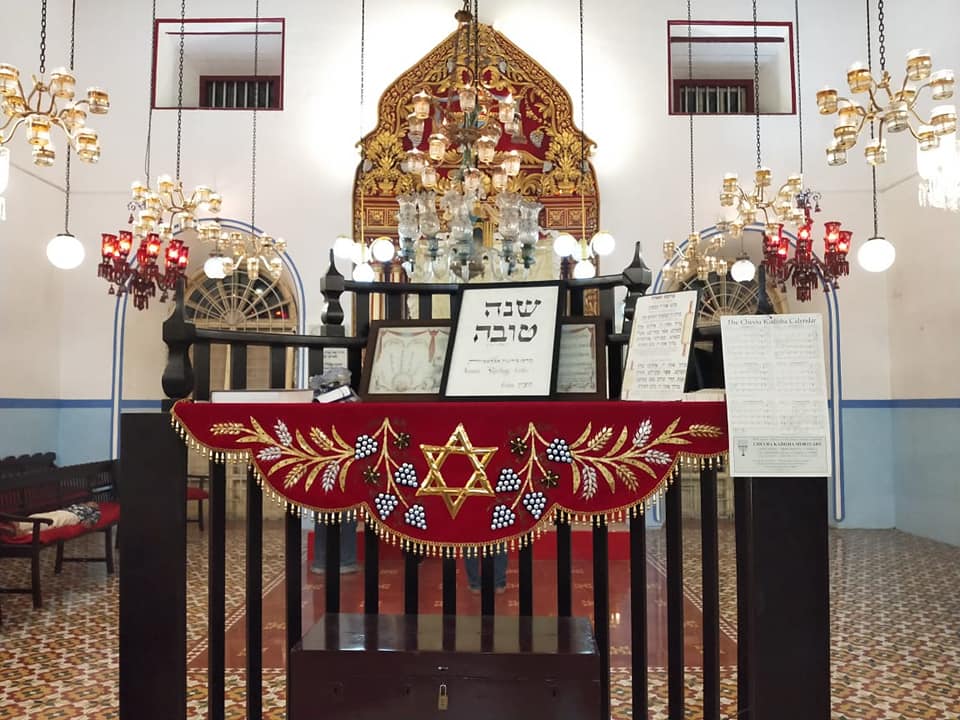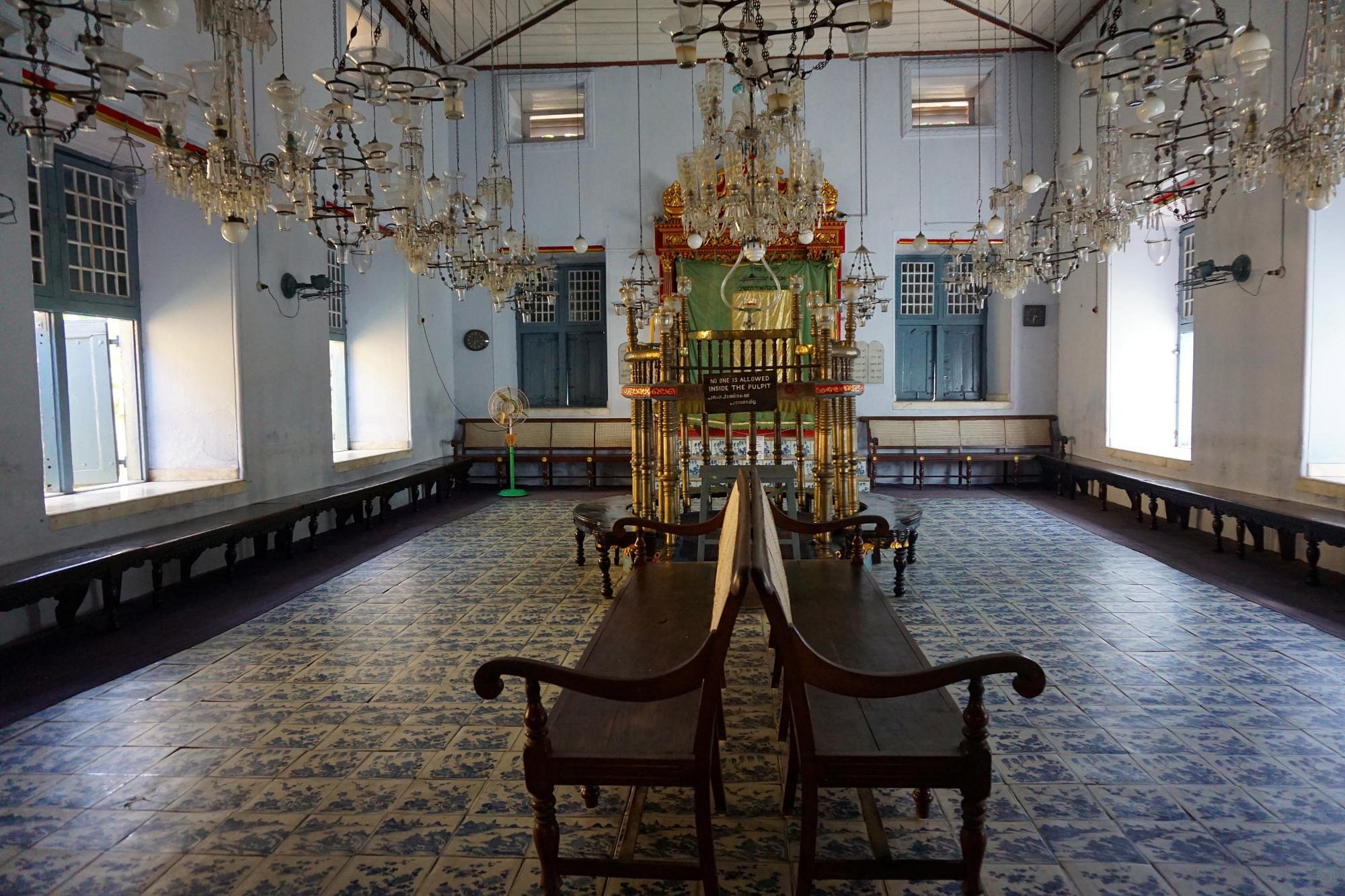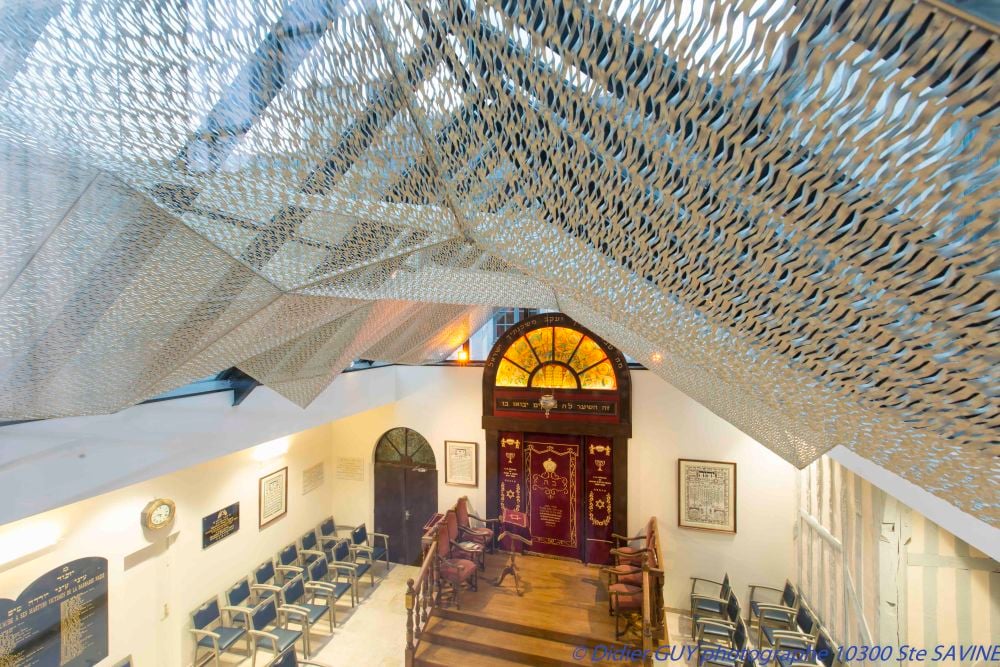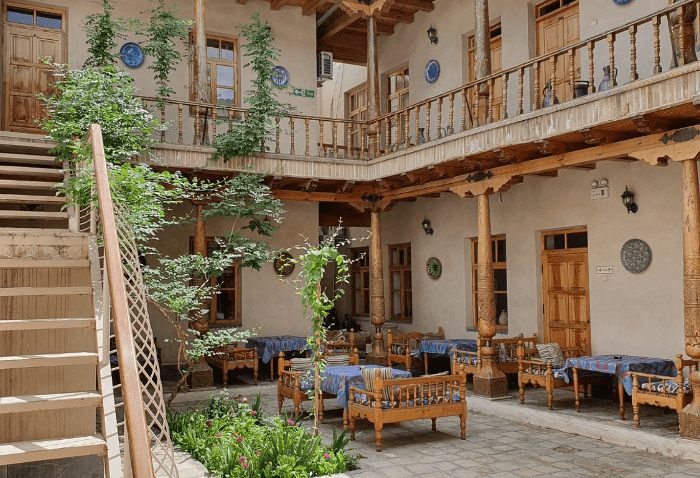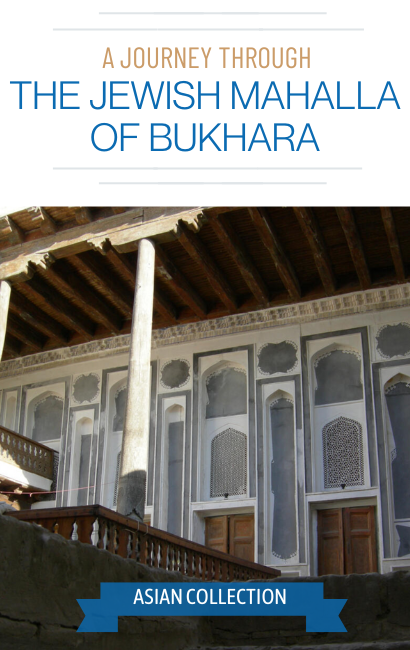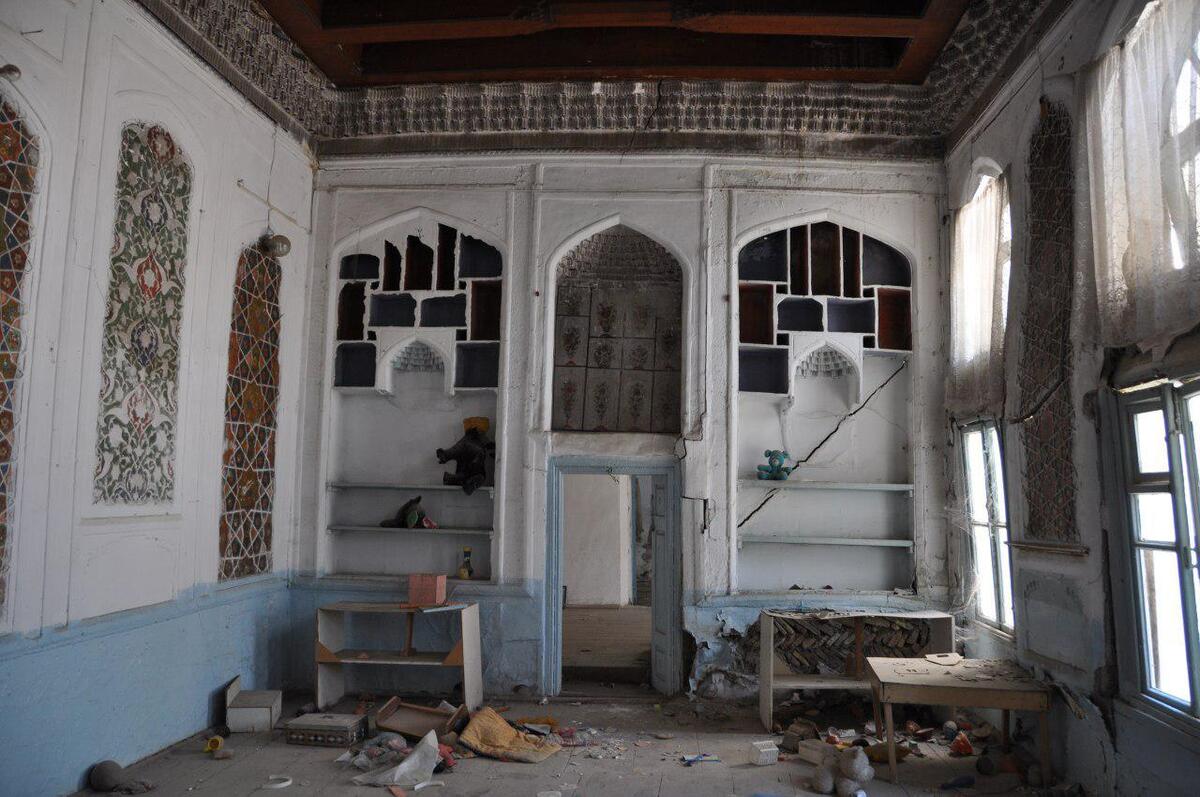The Paradesi Synagogue aka Mattancherry Synagogue is a synagogue located in Mattancherry Jew Town, a suburb of the city of Kochi, Kerala, in India. It was built in 1568 A.D. by Samuel Castiel, David Belila, and Joseph Levi for the flourishing Paradesi Jewish community in Kochi. The Malabari Jews or Yehudan Mappila (also known as Cochin Jews) formed a prosperous trading community of Kerala, and they controlled a major portion of worldwide spice trade.
In 1568, Paradesi Jews constructed the Paradesi Synagogue adjacent to Mattancherry Palace, Cochin, now part of the Indian city of Ernakulam, on land given to them by the Raja of Kochi. The first synagogue in India was built in the 4th century in Kodungallur (Cranganore) when the Jews had a merchantile role in the South Indian region (now called Kerala) along the Malabar coast. When the community moved to Kochi in the 14th century, it built a new synagogue there.
Today the Paradesi Synagogue is the only functioning synagogue in Kochi with a minyan (though this minyan must be formed with Jews from outside Kochi, as the number who still reside there is not sufficient). In conformity with the Hindu, St Thomas Christian or Syrian Mappila and Muslim Mappila traditions of Kerala, the worshippers are required to enter the Paradesi Synagogue barefoot. Other facets which are unique to the Cochin Jewish community, and which are results of Hindu influence, include special colours of clothing for each festival, circumcision ceremonies performed at public worship, and distribution of grape-soaked myrtle leaves on certain festivals.
The Paradesi Synagogue has the Scrolls of the Law, several gold crowns received as gifts, many Belgian glass chandeliers, and a brass-railed pulpit. It houses the 10th-century copper plates of privileges given to Joseph Rabban, the earliest known Cochin Jew. These two plates were inscribed in Old Malayalam by the ruler of the Malabar Coast. The floor of the synagogue is composed of hundreds of Chinese, 18th-century, hand-painted porcelain tiles, each of which is unique.
